If you’re hustling to generate B2B leads, then you must have had that life-shattering moment when you realized that your market isn’t all that big.
The B2C world has an ocean full of prospects while the business to business world might seem like a narrow stream.
Also, the length of the sales cycle is much longer and more expensive when dealing with other businesses.
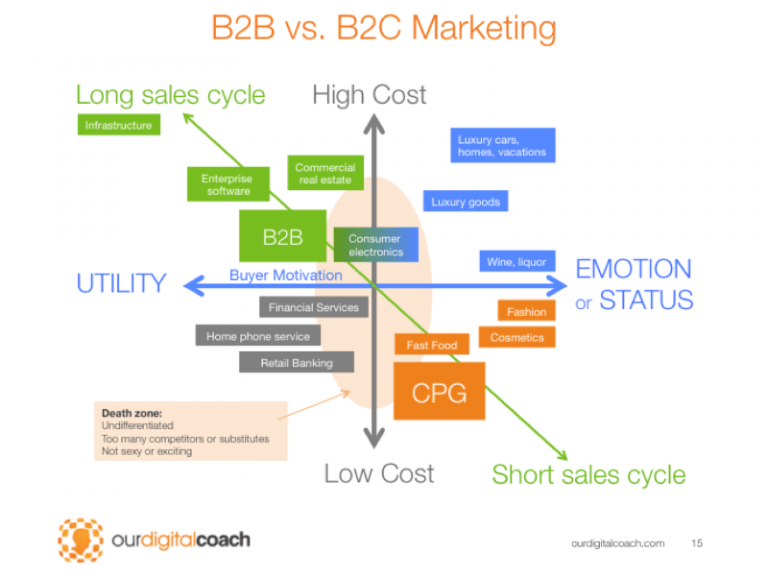
But I’m not here to rain on your parade or stifle you from your B2B lead generation efforts.
What you might not know is that generating hundreds (or thousands) of leads for your B2B business isn’t that hard.
And you don’t need to resort to disruptive strategies like cold calling.
If you implement the tactics and techniques I’m about to lay out, you will never have to spend another rejection-filled afternoon cold calling your way through local directories ever again.
And what’s more is that you will be equipped with an exact strategy to turbocharge your lead generation and achieve a level of success and revenue like never before.
In this guide, I am going to teach you about the power (and the struggles) of inbound lead generation, specifically for B2B marketers.
Let’s dive right in.
Defining a Lead
Ok, so before we dive headfirst into all the details and juicy secrets about how your B2B business can start generating more leads, we need to get a few definitions out of the way.
First and foremost, we need to define a lead.
It is, after all, a little challenging to understand an article about lead generation if you don’t understand what exactly a lead is.
In its simplest form, a lead is any person or business who has indicated some level of interest in buying your products or services.
Qualified vs. Unqualified Leads
Just because a person or business has expressed interest in your company does not mean that they are qualified to purchase your products or services.
And it definitely does not mean that they do warrant any further time or resource investment on your part.
Like George Orwell said in Animal Farm “Every lead is equal, but some leads are more equal than others.”

Or something like that…
To understand which leads you should be pursuing means that you must first understand the difference between a qualified and unqualified lead.
Qualified Leads:
- Are already a part of your sales funnel. This typically means they have opted into your newsletter, taken advantage of a free demo, or purchased an introductory product.
- Have a clearly defined need for which your company can provide a solution.
- Have a clearly defined budget that matches the cost of your products or services.
- They need your product or service and need it in a timely manner.
- They have the authority to make the purchase (e.g. they are an owner, manager, or C-level executive with the authority to invest company money).
Unqualified Leads:
- They are not yet a part of your sales funnel. Maybe they are a blog reader or someone who has commented on your content, but they have not yet invested time or money into your company’s offerings.
- Have unclear needs and problems or are unsure of your company’s solutions.
- Do not have a sufficient budget to purchase your product.
- Have no need for your services within any particular time frame.
- Do not have the authority to make the purchase.
To summarize this:
Qualified leads have the budget, authority, need, and desire to purchase, whereas unqualified leads lack one or more of these 4 criteria.
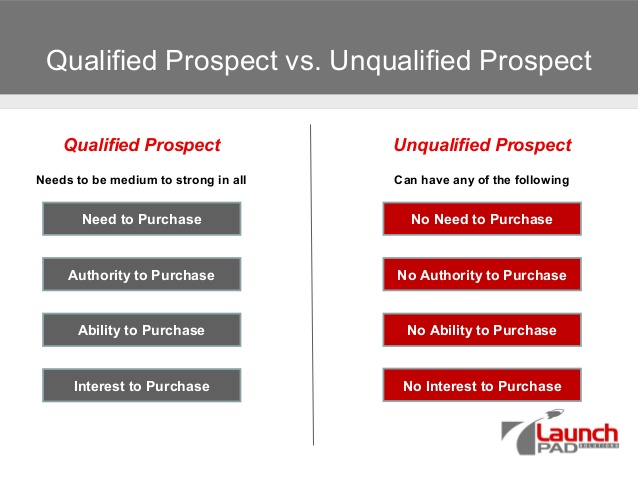
When you understand the difference between qualified and unqualified leads, you will be able to allocate your resources more intentionally ensuring that you have an abundance of sales-ready leads coming into your company each and every day.
What Exactly is Lead Generation?
Ok, so you understand what a lead is, and you understand the difference between a qualified and unqualified lead.
Now, you need to understand lead generation.
Lead generation is simply the process of attracting people who are complete strangers to your company and converting them into qualified leads through a variety of marketing tactics.
Or to put it more eloquently, lead generation is the art and science of finding unique and different ways to attract people to your business.
Now, before I dive into the best practices and exact methods for lead generation, I want to briefly make one more distinction.
B2B vs. B2C Lead Generation
Since this is an article specifically about B2B lead generation, some of you are probably asking the question:
What is the difference between B2B and B2C lead generation?
The honest answer?
It’s easier.
While the advanced methods and specific tactics you will use for B2B lead gen are slightly different from B2C companies, the core principles and practices remain the same.
The real difference is simply that it is easier for B2B companies to generate a high volume of sales-ready leads than it is for B2C companies.
Why?
For starters, B2B products or services are almost always considered an investment instead of an expense.
And since business owners normally have a mindset of “Scared money don’t make money”, this makes B2B products an easy sale.
Furthermore, the number of products on the B2C market make it highly competitive and extremely difficult to generate a substantial number of leads.
And while B2B is still difficult, competition is significantly lower because of the other challenges associated with B2B marketing and the unique solutions offered by different companies.
Where do Leads Come From?
Now that you understand all of the definitions and semantic details of lead generation, it’s important to figure out where leads are actually coming from.
Well, unfortunately for us, the answer is not as cut and dried as you might think.
Look at the chart below from Hubspot.
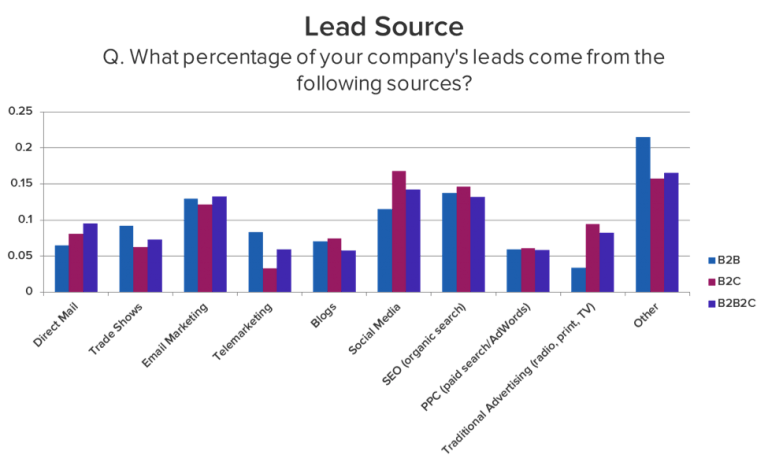
Ok, so you see about what you would expect.
B2B companies are generating loads of leads from social media, blogs, and email marketing.
But, if you look on the right-hand side of the graph, you will notice that nearly 41% of the leads that B2B companies generate come from “Other”.
This means that most B2B companies have no idea where almost half of their leads are coming from.
That’s because most leads are generated through a mashup of various marketing efforts that are executed consistently throughout a business’s lifetime.
Because of the lack of concrete data on the “most” effective B2B lead generation method, the methods that we are focusing on will be based upon their rate of growth and ease of use.
In my experience, while there are a plethora of different ways that you can generate leads, there are three methods that stand head and shoulders above the rest.
A) Content Marketing
The first and most important lead generation method in 2016 and 2017 is content marketing.
The rate of content growth over the past several years has been nothing short of astounding, and it’s not slowing down anytime soon.
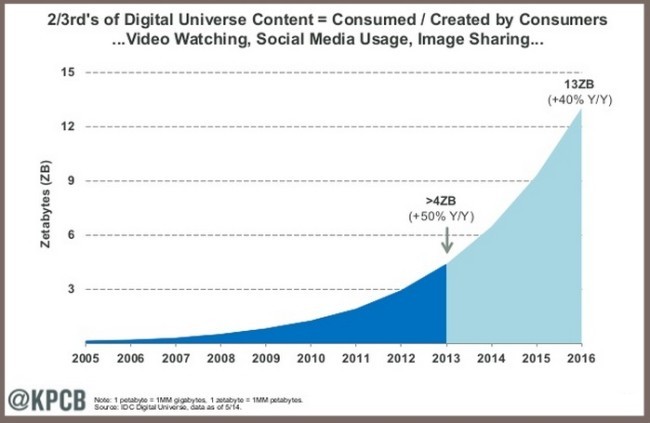
There is so much content floating around the web that it is all but impossible for your business to be found without an intelligent and well-designed content marketing strategy.
And while whole books could be written on all of the various tactics and multifaceted content marketing strategies, the following three tips will help you get started in the right direction.
1. Create a Website/Blog
This should be common sense in 2016, however, you would be surprised by the number of companies who still do not have a proper website and blog where they regularly release content.
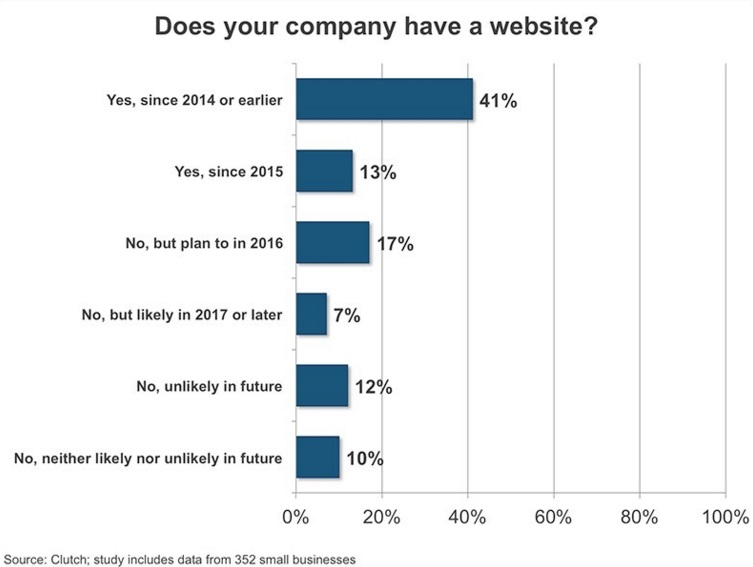
If other businesses cannot easily find your company online, then your odds of generating a serious number of leads diminishes exponentially.
It is absolutely mandatory that you have a fully optimized website set up where potential leads can easily find and connect with you and your company.
This step does not have to be expensive either.
You can hire a web design company to create a killer website for less than $1,000.
Or if you have an eye for design and some technical savvy, you can always do it yourself.
While it might seem elementary, having a website that is easy to find and use will massively increase your lead generating capacity and increase your company’s revenue at a rapid rate.
2. Create Epic “Read Magnets”
Once you have set up your blog, it is time to start filling that bad boy up with epic content, also known as read magnets or evergreen content.
Read magnets are articles or videos that provide a massive amount of value to your audience and help them solve real problems they are facing.
This marketing strategy will require a pretty significant upfront time investment but will generate leads on a long term and consistent basis.
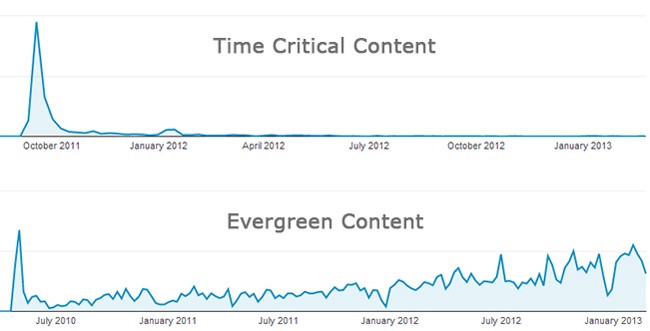
For example, if you run a company that specializes in Facebook advertising, then your read magnet could be an epic 4,000-word post on ad hacks that readers can use to double their ROI.
This article will pique readers’ interest and will likely lead them to dig deeper into your company and your unique offers.
The key with read magnets is to provide your audience with content that is so good that you could easily charge money for it.
If you’re not using content upgrades, add them to your evergreen content pieces and your B2B leads will quickly explode into an automated stream of revenue.
I know that some of you might be afraid of giving away too much for free, but before you start pacing around the room anxiously, consider one thing.
This content will likely be people’s first interaction with your company and therefore determine their first impression.
And if you want to attract leads and convert those leads into customers, then you need to make an absolutely staggering first impression.
If the quality of the articles on your website suck, your audience will assume that this quality is consistent across all of your work and will be unlikely to do business with you.
Always err on the side of offering too much value in your read magnets and you will easily make up any lost revenue through your new leads and raving fans.
3. Create Mind-Bogglingly Good Lead Magnets
Now that you have built your website and created epic content that your audience loves, it is time to convert them from a reader to a lead.
You do this through creating lead magnets, which is gated content that convinces your audience to share their email address or phone number with you.
This content can be anything from an ebook, free product trial, introductory coaching call, or free video series. The Sky’s the limit.
Here’s a great example from DigitalMarketer.
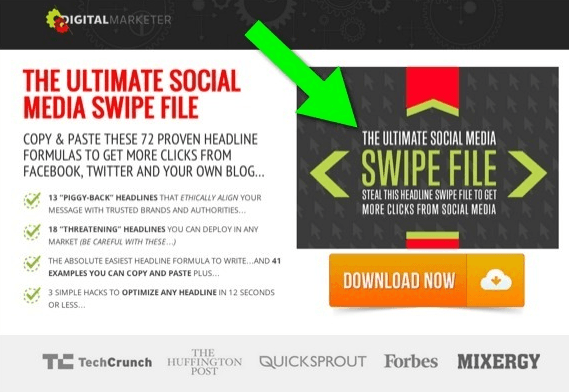
Just like with read magnets, the quality of your lead magnets will determine the success of the products and services further down your sales funnel, so always err on the side of offering too much value.
Once you have created an epic lead magnet that your readers love, warming them up and converting your new leads into customers becomes a walk in the park.
B) Social Media Marketing
Social media is one of the most important tools in any modern marketer’s toolbox.
With over 78% of the U.S. population currently using social media and nearly 2 billion people on social media worldwide, it simply cannot be ignored.

And while there are dozens of social media platforms that you could use to generate leads, as a B2B business owner, there are two platforms that will be most pertinent to your goals.
1. LinkedIn
Even though LinkedIn is not a particularly large social network when compared to companies like Facebook and Snapchat, it is one of the most effective networks for generating B2B leads.
LinkedIn is marketed as the social network for professionals and consequently has the highest volume of qualified B2B leads of any platform.
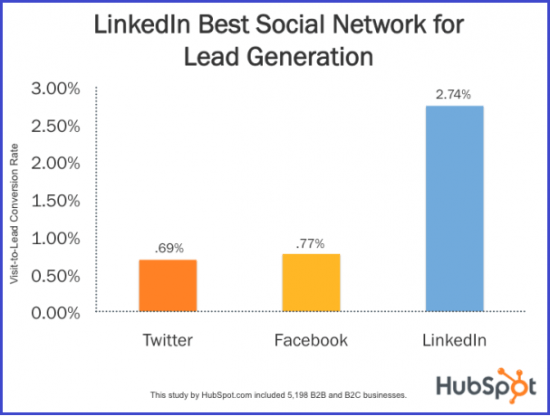
The key to successfully using LinkedIn for lead generation can be summarized in one word: authority.
If you want to generate leads with LinkedIn, then you need to start by first building your brand and personal image and creating an aura of authority and influence.
Professional people will only buy from you if you present yourself as another professional of equal stature and knowledge.
The first step to achieving this goal is to fully optimize your profile.
This means professional pictures, a descriptive bio, and a detailed list of your accomplishments and accolades.
Just look at these two examples and tell me who you would want to do business with.
This guy?
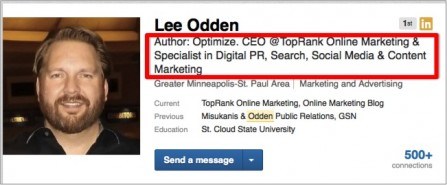
Or this guy?
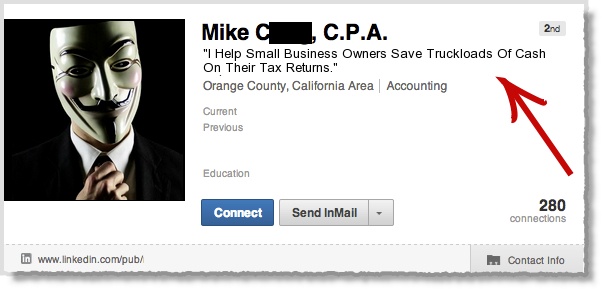
Once your profile is optimized, you need to start publishing epic content on LinkedIn Pulse just like you do with your blog.
And finally, once your content has started to generate traction, create a LinkedIn group that provides real value to the members.
With your authority established and your group built, you can easily use your newfound influence to convert group members into new leads through webinars and direct messages.
2. Facebook
A successful B2B lead generation strategy on Facebook requires time, patience, and a commitment to providing value before asking for anything in return.
It might take months of work before you see any real return on your investment, but that’s ok.
If you are willing to stick it out, put in the work, and overcome the initial “lead drought”, the heavens will reward you and shower you with all the leads your heart desires.
So what are the steps that you need to take to appease the lead generation gods and receive their blessings?
Actually, they are almost identical to the steps required to succeed on LinkedIn, with one major exception.
The importance of visual content.
I don’t mean that you need to be posting loads of videos, memes, or photos about your business (although you can).
What I mean is that you need to become a master at creating eye-catching CTAs that will entice your audience to click and find out more.
Here’s one that’s impossible to ignore by Wishpond.
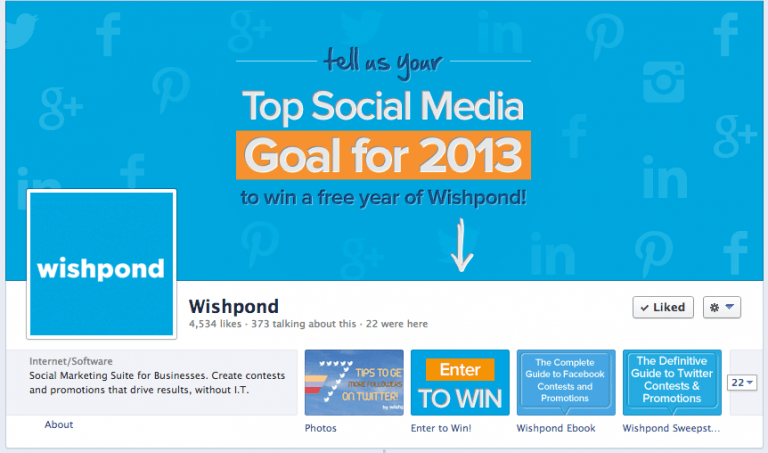
While there are plenty of Facebook hacks and advanced tactics that you can learn later down the line, posting and curating high-quality content in conjunction with beautiful CTAs is all you really need to do to get started.
C) Paid Advertising
Due to the steep learning curve and the potential profit losses associated with it, PPC (pay per click) advertising is a B2B lead generation method that many marketers are hesitant to use.
But fear not.
PPC is nowhere near as scary or expensive as many of you probably believe.
And regardless of whether you are utilizing Facebook ads, Google Adwords, or any of the other common PPC methods, there are a few tactics that will all but guarantee your success.
1. Optimize the Design of Your Ad
The first step of any PPC campaign is to optimize the design and copy of your advertisement.
While this will vary slightly from platform to platform and require a borderline exorbitant amount of testing (more on that later), there are a few principles that are universal for all advertising.
First and foremost, you want to make the visuals of your ads pop.
Here are a few examples.

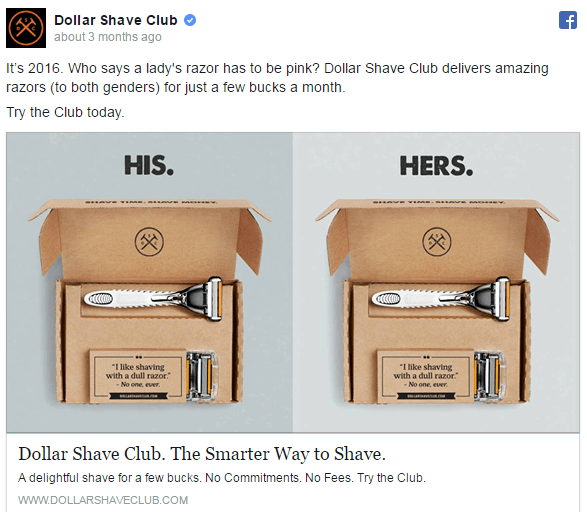
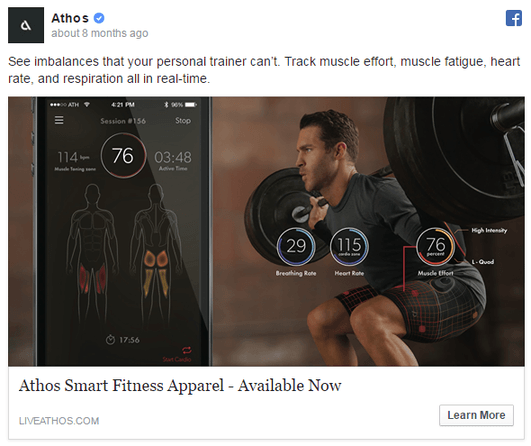
This means that you need to avoid generic images and color palettes and invest some serious time and money into designing ads that catch your viewer’s attention.
Here are a few tips for doing this.
- Use the color red, the human brain is wired to respond to the color red with more intensity and emotion than any other color.
- Use faces in your ads, studies have shown that faces evoke more emotion and a higher cognitive response than any other type of image.
- Include your UVP in the ads visuals. Tell your audience exactly what you are offering in big bold letters so that there is no ambiguity
However, the single most important tip for optimizing the design (and every other aspect) of your ad is to test, test, test, and then test some more.
The only way you will be able to determine the ideal visuals, colors, and copy for your ads is to constantly test different variations and meticulously track the results.
I know it might not sound sexy, but it is mandatory if you want to see any success with your PPC campaigns.
2. Get Specific on Your Targeting
One of the coolest parts about modern advertising is our unparalleled ability to determine exactly who sees our ads.
In olden days, targeting basically meant putting your ad in the right magazine or on a road where your ideal customer would likely commute to work.

Now, with the advances in targeting software and technology, you can set ultra specific parameters that will determine what kind of person will see your ads.
You can target audience members based on their age, interests, income, recent life events, and hundreds of other factors.
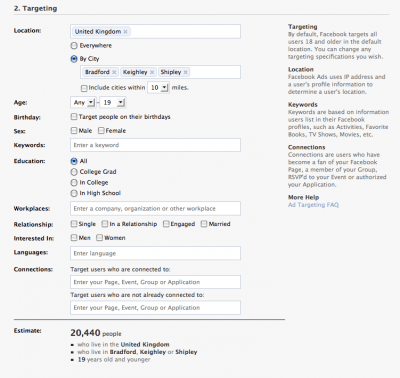
And it is your duty to take advantage of this technology to its absolute fullest.
Let’s say, for example, that you own a jewelry company and are trying to generate leads through Facebook advertising.
You could just target your ads towards women and married men.
Or you could go deeper.
With Facebook’s targeting, you could specify that your ads only be shown to men over the age of 25, who are married or in a relationship with an income over $75,000 a year and an upcoming anniversary.
A.k.a. Your perfect customer.
While this sort of targeting technology may make many people fear the inevitability of an Orwellian dystopia, as a smart marketer, you know better.
Until Big Brother comes knocking, take advantage of this unprecedented targeting capacity to generate as many qualified leads as possible.
And, as always, remember to test, test, and then test some more.
3. Limit Your Budget
Look, I know it might seem cool to come out guns blazing and invest thousands of dollars into your new ad campaigns.
But don’t.
Before you start investing serious money into PPC, you need to gather data and use it to fully optimize your campaigns.
Otherwise, you will end up losing thousands of dollars and unnecessarily draining your company of precious assets.

I recommend that you start out your PPC endeavors by investing no more than $5-10/day into any given platform.
This investment is sufficient enough to generate the results and information you need to tweak your campaign, but marginal enough that mistakes will not really affect your bottom line.
Keep your budget small for the first few months, and then, once you have built up the skillset and confidence you need to crush it, invest as much money as you like.
Sneaky B2B Lead Generation Tips to Turbocharge Your Success
Ok, so now that you understand the three basic lead generation methods (applicable to any type of business), let’s talk about some tactics that are especially effective for B2B businesses.
1. Create Solution Focused Blog Posts
It’s easy to get sucked into the trap of creating generic and unfocused blog content.
But if you really want to take your B2B lead generation to the next level, then you must wriggle your way out of this trap, now.
Instead of creating general content that can be found on a thousand-and-one other websites, focus on creating content that provides detailed solutions to your audience’s unique problems.
There are two easy ways of doing this.
The first is to send out a series of surveys to your email list and social media followers asking them what their biggest struggles are until you pinpoint the 2-3 most important pain points.
Once you have determined your audience’s most pressing issues, you can easily create a content strategy to solve them.
The second is to simply peruse through your inbox and sent mail folders and find specific questions that clients have repeatedly asked you in the past.
Take your answers to these questions, flesh them out, and then integrate this new content into your overall strategy.
Using this tactic will allow you to create content that will solve more businesses problems and result in more qualified leads for you.
2. Focus Your Social Media Efforts on Relationships
We all love getting likes on Facebook or watching our number of Instagram followers soar.
However, these metrics are not really relevant to the B2B marketer.
If you own a B2B business, odds are, you are only looking to attract 50-100 quality customers.
And having 10,000+ Facebook fans isn’t the most direct path towards achieving that goal.
Instead, focus your social media efforts on building and cultivating relationships.
Invest most of your time and energy on social media into finding individuals who need your product or service and then building the rapport necessary to convert them.
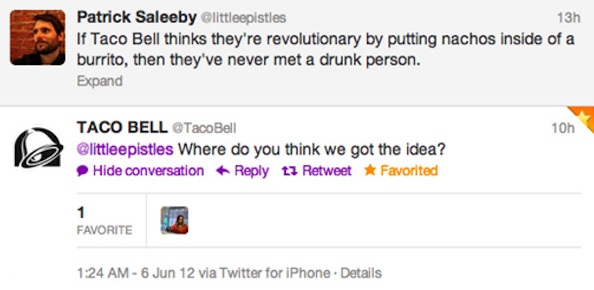
Get out of the 50 LinkedIn groups that you are a part of and focus on getting highly involved in only one to two instead.
Don’t worry about the likes your Facebook posts are getting, instead worry about building engagement through responding to comments and sharing more targeted content.
Remember, in B2B it’s about quality, not quantity.
3. Create Sequential Lead Magnets
While “one and done” lead magnets work just fine, creating a sequential lead magnet works even better.
By generating leads through sequential lead magnet offers, you will be able to gradually take the relationship deeper and deeper, increasing the odds of a conversion in the process.
For example, instead of simply creating a free eBook to offer your audience, why not create an epic 14-day video course?
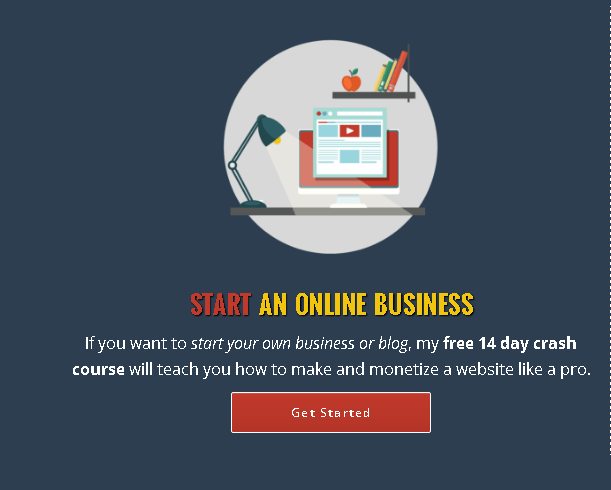
Over the course of a week, take your new lead on a journey.
Each day, add more and more value, keeping the content solution oriented and intriguing and by the end of the week, the sale will be all but in the bag.
4. Leverage Social Proof to Increase Conversions
One of the most powerful psychological tools at your disposal is a little thing called social proof.
Basically, this is the concept that people are inherently distrusting of new companies and products due to the potential cost of making a subpar investment.
The easiest way to get around this is through providing socially based evidence of your company’s validity.
For example, integrating case studies and testimonials into your content marketing, social media, and PPC campaigns is a great way to quickly build trust and increase conversions.
Some examples of social proof in action.
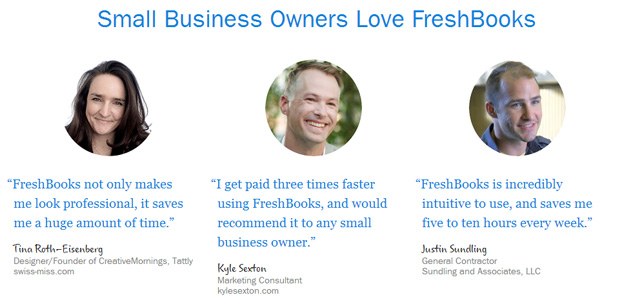
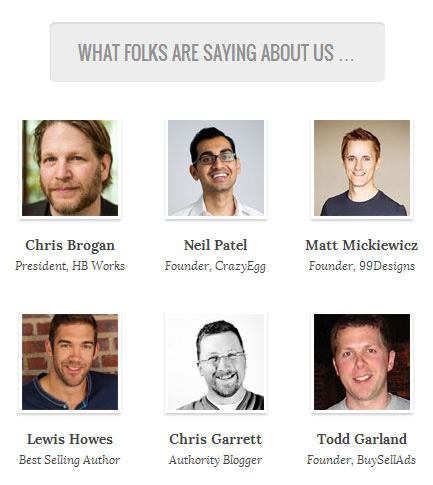
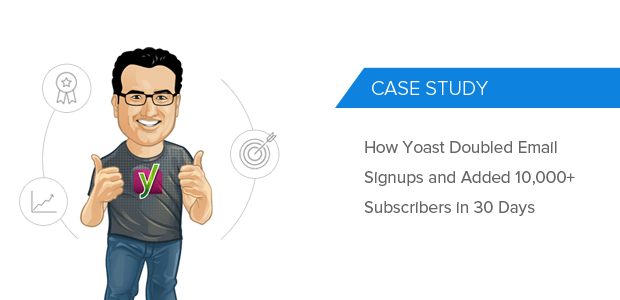
The important thing to remember is to use names and faces that your personas can identify with or already trust.
If I showed a testimonial from Kanye West, you might think it’s cool, but it wouldn’t necessarily persuade budding entrepreneurs who need leads.
Common Lead Generation Mistakes to Avoid
So now, you know exactly what you need to do to start generating more leads for your business.
But before I unleash you and your newfound knowledge and lead generating abilities upon the world, we need to address one last thing.
The common mistakes that many marketers make in their lead generation efforts that can result in catastrophic losses.
1. You do Not Have a Written Content Strategy
By now, you should understand the importance of content marketing for successful lead generation.
However, one of the biggest mistakes that I see many marketers making is that they do not have a well planned and written content marketing strategy.

Creating and sharing content is great.
But it is of little use unless it is part of a bigger plan with clearly defined goals for each segment.
If you want to generate leads through content marketing, then you need to create a plan for your content.
Period.
2. You are not Taking Advantage of Mobile
Mobile marketing is not the future of lead generation, it is the present.
If you are ignoring mobile, then you are ignoring one of the most important and widely used platforms in the lead generation world.
It is absolutely critical to your success that you have a responsive website and PPC/social media campaigns that are mobile focused.
3. Your Sales and Marketing Teams aren’t On the Same Page
Most of the leads that you generate will not be ready to be sold to.
This is a hard pill to swallow, but it’s the truth.
This means that your marketing team needs to have a deep understanding of what a sales-ready lead looks like so that they do not waste your sales team’s time and your business’s resources.
4. You’re buying leads
Listen:
I can sell you all the leads you want, but what good is it if you don’t know anything about them? And even if I told you great things, would you believe me?
Buying leads is the worst thing you can do. While PPC advertising may be looked at as “buying leads,” you have a deep understanding of the types of people who would opt-in for these kinds of lead magnets.
Lead generation companies who promise you email addresses, phone numbers, and mailing addresses will lead you into a game of Russian roulette.

Your business might get lucky, but you won’t be able to sustain your business without generating your own inbound leads.
Bite the bullet and start putting together your own B2B lead generation ideas.
Conclusion
I know that generating leads for your B2B company may seem like a daunting task.
But hopefully, after reading this guide, you have a clearer picture of the action you need to take and the steps required to generate a high volume of prospective clients for your company.
It’s not complicated and it’s not even particularly difficult.
But it will require time, effort, and consistency.
However, if you use the steps I have detailed above, you can easily generate an extra 10-50 new leads in the next 8 weeks alone!
Now, get out there and get to it!
Did you have any questions about lead generation that I didn’t cover in this article? Let me know in the comments below.
